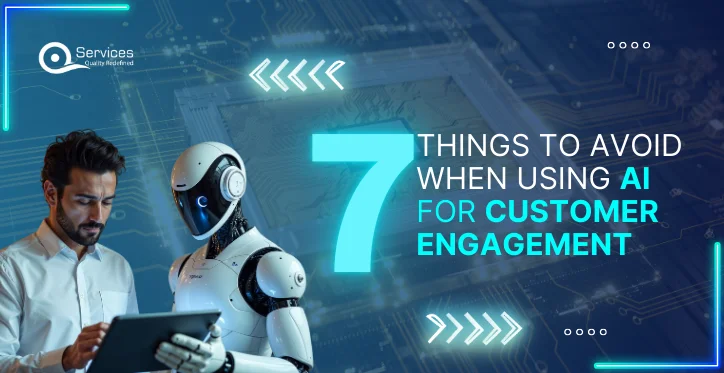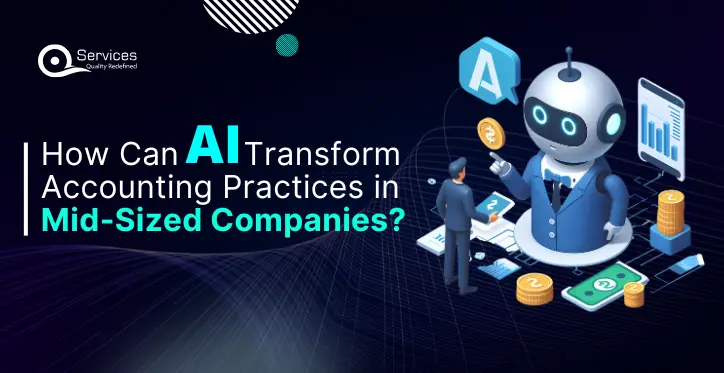
Rewards
.





CANADA
55 Village Center Place, Suite 307 Bldg 4287,
Mississauga ON L4Z 1V9, Canada
Certified Members:
.



Home » The Role of Generative AI in the Fourth Industrial Revolution

Industry 4.0 is changing how factories work by adding smarter machines, artificial intelligence, and new ways to manage production. Generative AI is one of the advanced technologies making this possible. It speeds up design, helps production run smoother, and supports greener manufacturing.
In this blog, we’ll show you how GenAI is transforming factories and shaping the future of manufacturing.
Industry 4.0 is like giving factories a brain, and artificial intelligence is the powerhouse behind it. With Industry 4.0 artificial intelligence, factories can analyze huge amounts of data to find the best way to produce goods, prevent problems, and make everything run smoother.
Generative AI in manufacturing adds creativity to the mix, helping businesses design better products and save time in the process. This blend of Industry 4.0 and artificial intelligence is making manufacturing more efficient, innovative, and ready for the future.
AI has brought a new level of intelligence to Industry 4.0 and manufacturing. By using smart machines and predictive technologies, manufacturers can optimize operations, reduce downtime, and adapt quickly to new challenges. This smart manufacturing ai approach ensures factories remain productive and cost-effective.
Generative AI (GenAI) has become a vital tool for modern product development. By analyzing data, it creates innovative designs and helps manufacturers achieve their sustainability goals. For instance, Airbus uses GenAI to produce lightweight, efficient designs that save on materials and energy costs, showing how creativity and efficiency can go hand in hand.
Gone are the days of reactive fixes in manufacturing, thanks to AI-driven Predictive maintenance. Predictive systems act like watchful guardians, detecting early signs of trouble and sending alerts so issues can be addressed proactively. Prescriptive systems take it to the next level, offering precise recommendations to fix problems. This combination keeps the production line humming along smoothly with fewer hiccups and no unnecessary downtime.
AI is making factories smarter. In smart manufacturing 4.0, machines equipped with AI can adjust themselves automatically to improve how things are made. These machines are connected to sensors that collect real-time data, so they can make decisions on the fly. Making production process more flexible, efficient, and responsive to changes without human intervention.
When we talk about the application of AI to Industry 4.0, we’re referring to how AI helps optimize the whole manufacturing process. AI collects loads of data from a variety of machines and sensors and then analyzes it to spot trends and predict problems before they even happen. This means fewer breakdowns, smoother operations, and overall better performance. AI isn’t just about doing tasks faster—it’s about making smarter decisions in real time.
Generative AI for manufacturing is changing the way products are designed and developed. Companies are using AI to come up with new product designs quickly. For example, Airbus uses
Generative AI to create parts for airplanes that are lighter and more fuel-efficient. The cool thing is, these AI tools can suggest ways to make products more sustainable and cost-effective, while speeding up the design process. It’s all about creating smarter products faster.
Think of AI in manufacturing industry as the foundation of your smart factory. Traditional AI is always working in the background—monitoring performance, finding patterns, and fixing issues before they happen. But generative AI in manufacturing takes things further by adding creativity. GenAI helps design new products, generate action plans, and even suggest ways to improve workflows. The partnership between these two types of AI brings out the best in both, making the manufacturing process faster, smarter, and more efficient.
Get free Consultation and let us know your project idea to turn into an amazing digital product.
Right now, Generative AI is helping manufacturers in many ways—whether it’s predicting when maintenance is needed, improving the quality of products, or optimizing the overall production process. AI’s ability to predict problems before they happen is already a game-changer for keeping things running smoothly.
In the future, Generative Robots will become even more self-sufficient. They will be able to design and improve their tasks without human intervention, making them incredibly adaptable to changing conditions.
Additionally, multimodal robots will be able to communicate and work alongside humans in ways that are safer and more efficient.
Even though there are challenges—like managing data and training workers—these advancements will lead to faster production, more sustainable practices, and smarter manufacturing.
Of course, there are challenges to work through, like making sure the data is high-quality and that workers are trained in the new tech, but the future looks promising. With Generative AI, manufacturing will become more productive, sustainable, and innovative.
Generative AI and AI Industry 4.0 are playing a crucial role in transforming manufacturing by improving product designs, reducing waste, and enabling smarter operations across various industries.
Ford leverages AI Industry 4.0 to enhance production efficiency by predicting when machinery will require maintenance. Generative AI manufacturing helps the company design vehicle components faster and at a lower cost, improving overall production speed.
Siemens applies Generative AI to create optimized, lightweight aircraft components, improving fuel efficiency. Predictive maintenance powered by AI ensures that the systems in aircraft remain operational, preventing unexpected downtimes.
In the energy sector, AI Industry 4.0 optimizes power plant operations by forecasting potential failures and improving energy efficiency. Siemens uses AI to lower costs and improve reliability, helping energy companies serve customers more effectively while reducing operational risks.
AI helps predict when machines will need maintenance, so we can fix things before they break down and cause delays. This keeps everything running smoothly.
AI checks production lines in real-time to catch any issues early, making sure the products come out just right and minimizing defects.
By analyzing data, AI finds inefficiencies and bottlenecks in the production process, helping manufacturers optimize and save time and money.
Generative robots are going to be able to figure out their own tasks and optimize them on their own, without needing human help. This will make them really adaptable to changes on the production floor.
These robots will learn new tasks on the fly, adjusting to changes in production without missing a beat.
Future robots will talk, touch, and see, making it easier for them to work with humans. This will boost teamwork and make the process smoother.
Robots will handle dangerous tasks, keeping workers out of harm’s way and improving safety on the shop floor.
AI systems depend on good data to work well. Manufacturers will need to ensure they have high-quality data for accurate results.
Workers will need to learn new skills to work with AI and automation. Organization should also invest in training of employees to make the transition smooth.

AI will speed up the manufacturing process, allowing for quicker production and faster turnaround times.
AI will help reduce waste and use resources more efficiently, making manufacturing more sustainable.
AI will drive new ideas, smarter automation, and innovative product designs, leading to the future of smarter, more efficient manufacturing.

Generative AI is transforming manufacturing by improving product design, cutting down on downtime with predictive maintenance, and helping businesses work more sustainably. AI is making production processes smarter and more efficient, as technology keeps advancing, we can expect even smarter machines and robots that work alongside humans to make production easier and safer. To stay ahead, manufacturers need to embrace these technological advances and keep innovating to maintain a competitive edge.

Your business is growing, and you need more computing power to handle increasing demands. You could invest in costly hardware, or you could embrace the cloud. Enter Amazon EC2 and Azure VM—two of the most powerful solutions in the cloud market.

In this blog, we’ll break down the 7 things to avoid when using AI for customer engagement. Whether you’re naive to AI or want to make your current strategy even better, these tips guide you create stronger connections with your customers.

Running an accounting firm can be tough, especially for mid-sized companies with limited resources. But using AI for accounting could be the secret weapon to give them an edge. Imagine AI taking care of tasks like managing accounts payable, reconciling transactions, or tracking expenses—leaving your team free to focus on more complex, value-driven work.
Traditional AI focuses on recognizing patterns and making decisions based on existing data, while Generative AI creates new data. For example, traditional AI might classify images, whereas Generative AI can generate entirely new images.
Applications include creating realistic images and videos, generating human-like text, designing new products, and even composing music. In manufacturing, it can optimize design processes and improve production efficiency.
Benefits include faster product development, improved production efficiency, reduced waste, enhanced quality control, and the ability to quickly adapt to market changes.
Examples include AI-driven design tools that create optimized product designs, predictive maintenance systems that prevent equipment failures, and quality control systems that detect defects in real-time.
Multimodal robots can interact with humans through various modes such as voice, vision, and touch. They enhance human-robot collaboration, making manufacturing processes safer and more efficient.
Addressing the skill gap requires investment in education and training programs, partnerships with educational institutions, and continuous learning opportunities for employees.
The future trajectory includes advancements in generative robotics, increased use of multimodal robots, and the development of more sophisticated AI models. These innovations will drive further automation and efficiency in manufacturing.
Generative AI will enable more adaptive and efficient manufacturing processes, improve product designs, and enhance human-robot collaboration. It will also drive sustainability by optimizing resource use and reducing waste.
Examples include companies that have implemented AI-driven predictive maintenance systems, resulting in reduced downtime and maintenance costs, and those that use AI for quality control, leading to fewer defects and higher product quality.
AI-driven design tools explore a vast design space, generating optimized designs that meet performance, cost, and manufacturability criteria. This leads to innovative products with improved quality and performance.
Schedule a Customized Consultation. Shape Your Azure Roadmap with Expert Guidance and Strategies Tailored to Your Business Needs.
.





55 Village Center Place, Suite 307 Bldg 4287,
Mississauga ON L4Z 1V9, Canada
.




Founder and CEO

Chief Sales Officer
